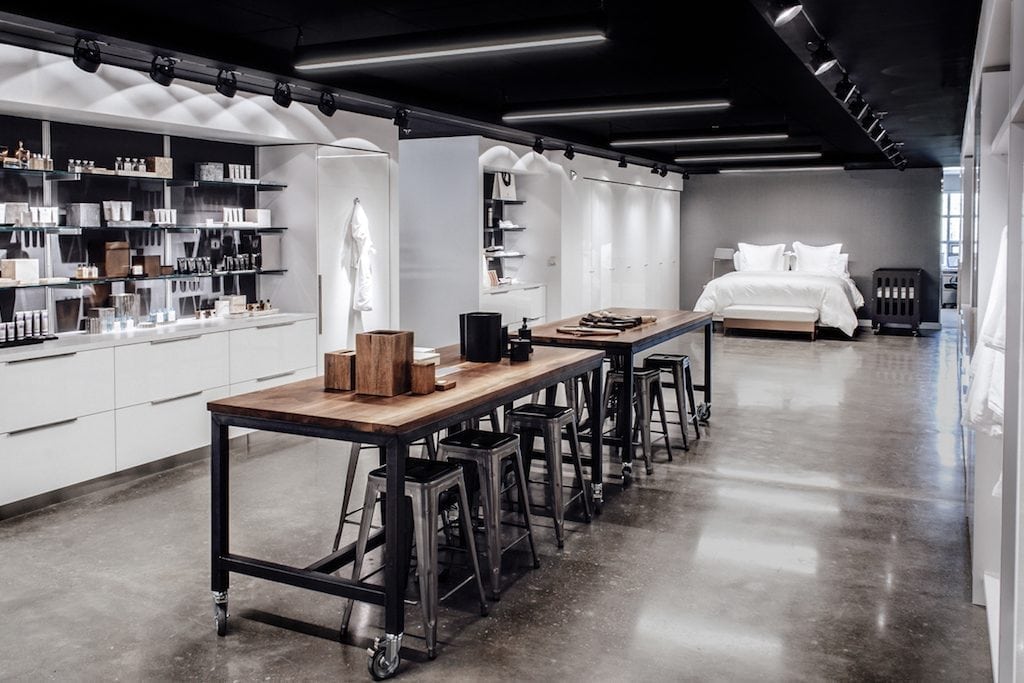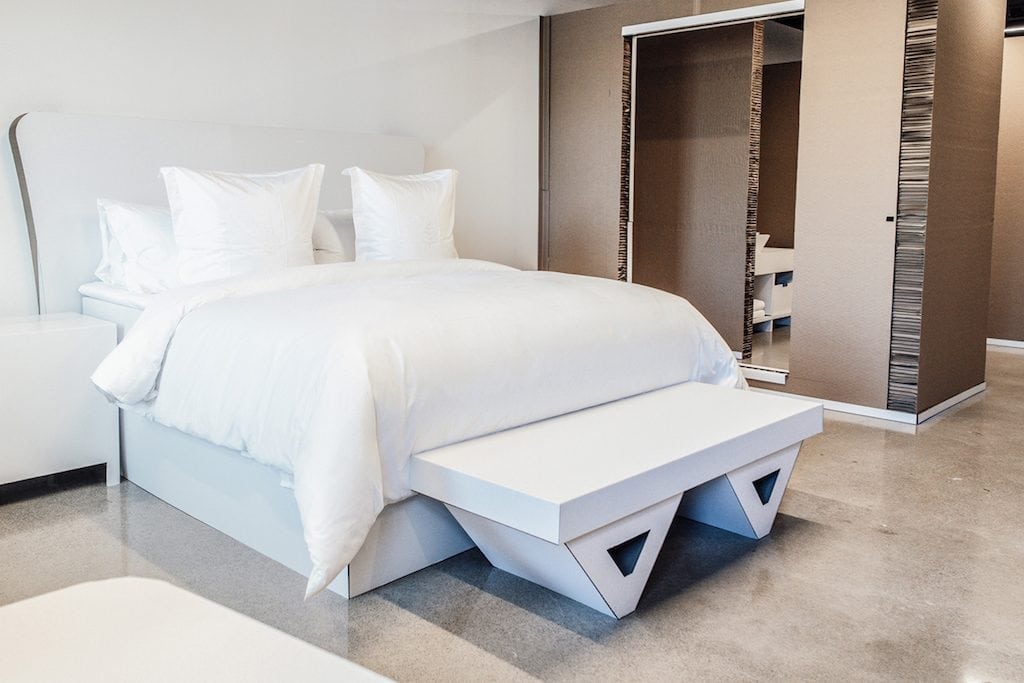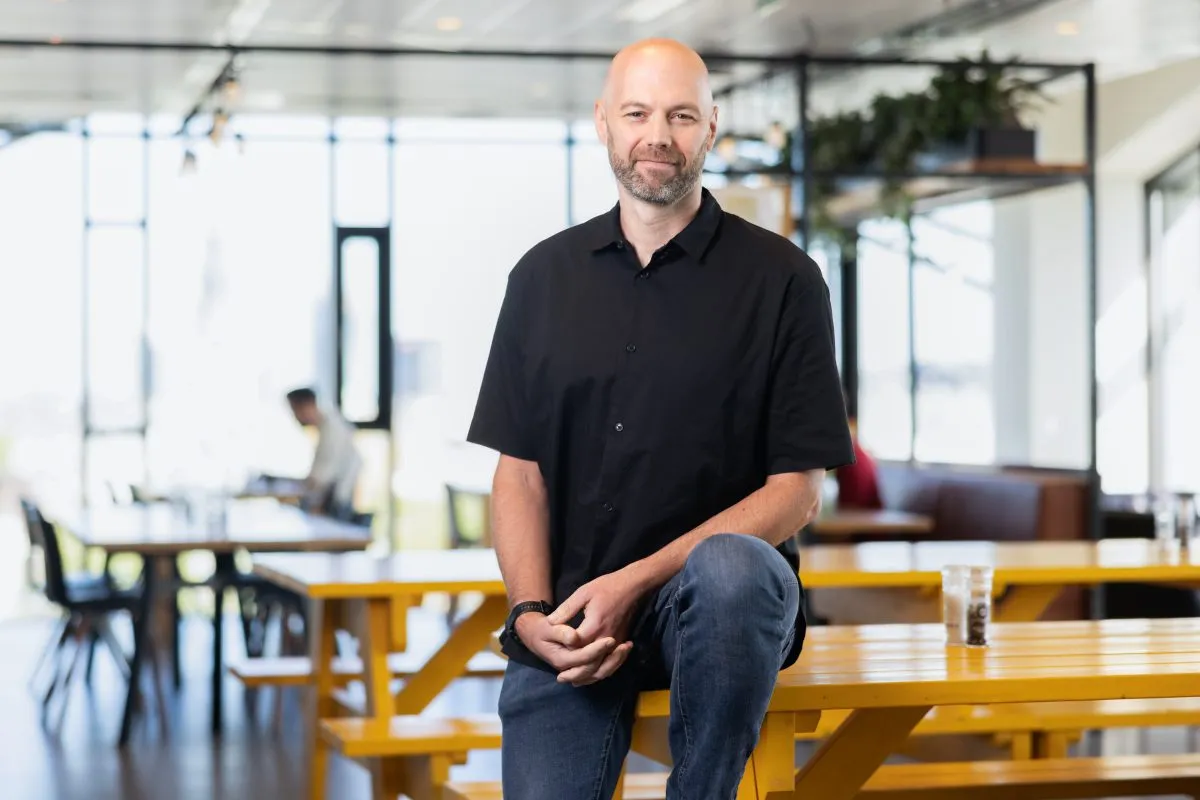An Inside Look at Four Seasons' Working Hotel Laboratory

Skift Take
When you walk into the Four Seasons Hotels and Resorts' head office in Toronto, the first thing you may notice is the oil painting of Four Seasons founder Isadore Sharp in a suit, standing by a fireplace mantle.
Surrounding Sharp's portrait are walnut-colored wool panels and glossy black and green marble and a single reception desk. It feels exactly as you'd expect a very corporate office to be like.
Walk through the main doors and up a staircase, however, and it feels as though you've entered an entirely different space. Bright green cubes, artfully suspended from the ceiling, float above the stairs and once you reach the top, you'll see a vivid mural depicting a man holding a heart. It's a very literal transition from the Four Seasons' past and its traditions into the company's future.
It's here, in Four Seasons' new Research and Discovery Studio, also called the R&D Studio, where the company has built itself a working laboratory for testing out and dreaming up every little detail imaginable when it comes to operating its more than 100 hotels worldwide.
Because no two Four Seasons properties are to be exactly alike, Four Seasons president and CEO J. Allen Smith said the company has always paid close attention to every single detail that goes into each hotel.
"We've always done that, but we just haven't had a great space like this to sort of facilitate the process," he told Skift. "This [studio] has been under way, under consideration, for the last few years. We finally got the whole concept put together, got the budget approved and moved forward on it. It's important both because it's a space that facilitates the sort of interaction and decision making and the consideration of alternatives that we think is important to producing the best product possible for our guests, but it's also an important statement to our owners and others about the importance of product and the importance of the process, I think, associated with creating great hotels. That we would take the time and effort to design a space like this, and spend the money to do so [is significant]. Because if you're the leading luxury hotel company in the world, I think it's important that you demonstrate to the owners we work with that we take it as seriously as they do."
The space really is a working laboratory where Four Seasons staff test out a variety of concepts. Whether you're a hotel owner or a hotel guest, walking through the studio certainly gives you a better, more holistic understanding of the process of making a Four Seasons hotel come to life.
One of the better examples of that is a model room built entirely out of cardboard [see above]. While it costs thousands to build this custom replica of a guest room, it's far less expensive than building an actual model guest room on site as traditionally done, and it helps the company determine what works and what doesn't on a more tangible, spatial scale.
For example, during our visit, we were shown a model of a room for a property with a wraparound desk that just didn't work for the space — as beautiful as it was in the renderings, it felt restrictive and cumbersome when you walked into the cardboard guest room itself, explained Dana Kalczak, vice president of design for Four Seasons. So, Kalczak and the design team decided, instead to place a round table, made of cardboard, in its place, giving guests more space and flexibility for the table space.
"Having this type of model room to work with lets us be less prescriptive with our rooms," said Smith.
This concept of creating model guest rooms or testing out hotel concepts isn't a new idea in hospitality. Some recent examples include Starwood's Starlab Innovation Studio and even more recently, new Starwood owner, Marriott, unveiled the M Beta Hotel, an actual full-service hotel that will test out a variety of new features on a continuing basis in Charlotte, N.C.
The Four Seasons R&D Studio was developed primarily for staff to use, and to act as a real-life showcase for designers, developers, and owners. Here, they can see exactly which type of closet hanger is best for their rooms worldwide, which uniforms work best for a new property, what shower head offers the best water pressure, which barware to use for the minibar (or MyBar, as Four Seasons calls it), and even which high-tech toilet might be a little too high-tech (and complicated) for a guest to figure out how to use. Sets of table tops in another area of the space let the staff decide exactly which dishes, cutlery, and table settings they want to use for new restaurant concepts, too.

The studio also includes a space where the Four Seasons team can test out guest room amenities such as toiletries, bathrobes, and bed linens.






